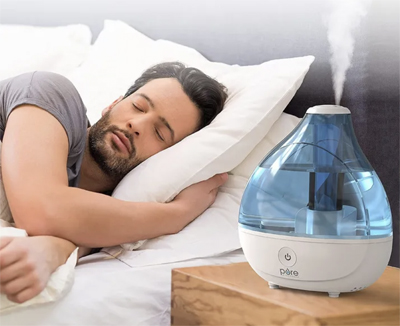What’s Your Homebuying Tipping Point?
Is there ever a “perfect time” to buy?
One of my favorite books is Malcolm Gladwell’s The Tipping Point. In it, Gladwell describes a tipping point as the moment in time when a small change can lead to a large and rapid change in behavior.
We are at a tipping point in the housing market. Mortgage rates have been rising steadily for months, and they are now at their highest level in years. Inflation is also at a 40-year high, and there is a lot of uncertainty about the future of the economy.
This is causing many homebuyers to hesitate. But now more than ever, it’s important to get advice from your financial team (your mortgage broker, real estate agent, and financial advisor). They can help you assess your financial situation, understand your housing needs, and develop a plan to buy a home in these uncertain financial times.
So, what’s YOUR tipping point? What will it take for you to decide the time is right to buy a home?
Here are a few things to consider:
- Can you afford to buy a home at current rates?
- Do you have a down payment saved up?
- Can you qualify for a mortgage?
- How much risk are you comfortable with?
If you’re on the fence, I encourage you to give me a call. I can help you understand your options and make the best decision for your financial situation.
There are both pros and cons to buying a home in a volatile market. On the one hand, homes are still selling, and there are still buyers who are willing to pay top dollar. This means that if you’re selling your home, you may be able to get a good price.
On the other hand, the current environment can make it more difficult to buy a home. If you’re taking out a mortgage, you may find that it could become more expensive to borrow money.
Pros:
- Homes are still selling.
- You may be able to get a good price for your home if you’re selling.
- Interest rates are still relatively low compared to historical standards.
Cons:
- Low inventory can make it more difficult to buy a home.
- You may find that it’s more expensive to borrow money if you’re taking out a mortgage.
- There is a risk that home prices could decline if the economy worsens.
If you’re not sure if now is the time to buy a home, keep in mind:
- Your financial situation. Make sure you can afford to buy a home at current rates and that you have a down payment saved up. Consult with your financial team.
- Your housing needs. Do you need to buy a home now, or can you wait? If you can wait, you may want to do so until there is more certainty in the financial markets.
- Your risk tolerance. How much risk are you comfortable with? If you’re worried about the economy worsening, you may want to wait to buy a home.
Ultimately, your homebuying tipping point is a personal decision. There is no right or wrong answer. But by carefully considering your financial situation, housing needs, and risk tolerance, you can make an informed decision that is right for you and your family.
Let’s Talk
I am dedicated to finding you a mortgage that fits your budget and works for your unique situation. Call me at 617-965-1236 to get started.
* * * * *
Ready to buy a new home or refinance the one you own? Please get in touch and I’ll be happy to answer your questions and help guide you through the process. I look forward to speaking with you.
Autumn Is in the Air
The leaves are changing, the air is getting crisper, and the pumpkins are starting to appear. It’s time for all things spooky, from Spirit Halloween stores and haunted houses to scary movies and pumpkin spice lattes.
Here are a few ideas for things to do during spooky season:
- Visit a haunted house or corn maze.
- Watch a classic horror movie, such as “Halloween,” “The Shining,” or “Hocus Pocus.”
- Carve a pumpkin or decorate your home for Halloween.
- Attend a Halloween costume party or festival.
- Bake or buy Halloween-themed treats, such as pumpkin pie, candy corn, and chocolate bats.
No matter how you choose to celebrate, we hope you have a safe and spooky October!
Home Improver: Humidifiers for Fall and Winter
There are many benefits to using a humidifier in the fall and winter to add moisture to the air.
- Reduced risk of respiratory illness: Dry air can irritate the airways and make people more susceptible to respiratory infections, such as the common cold, flu, and bronchitis. Humidifiers can help to reduce the risk of these infections by keeping the airways moist.
- Reduced allergies: Dry air can also aggravate allergy and asthma symptoms. Humidifiers can help to relieve these symptoms by making it easier to breathe.
- Improved skin: Dry air can dry out the skin, leading to itching, cracking, and flaking. Humidifiers can help to improve skin health by keeping the skin hydrated.
- Improved sleep quality: Dry air can also dry out the nose and throat, which can lead to snoring and difficulty sleeping. Humidifiers can help to improve sleep quality by keeping the nose and throat moist throughout the night.
 There are two main types of humidifiers: central and portable. Central humidifiers are installed into the home’s HVAC system and humidify the air throughout the entire house. Portable humidifiers are smaller and can be placed in individual rooms.
There are two main types of humidifiers: central and portable. Central humidifiers are installed into the home’s HVAC system and humidify the air throughout the entire house. Portable humidifiers are smaller and can be placed in individual rooms.
Central humidifiers are more expensive to purchase and install than portable humidifiers, but they are also more effective at humidifying your entire house.
Which one should I choose? When choosing a humidifier, it is important to consider the size of your home, the amount of moisture you need to add to the air, and your budget. If you have a large home, you may need a central humidifier. If you have a smaller home or are on a budget, a portable humidifier like the one pictured above may be a good option.
Use it safely. Choose a humidifier that is easy to clean and maintain. Humidifiers can become breeding grounds for bacteria and mold if they are not cleaned properly. To use a humidifier safely and effectively, follow these tips:
- Use distilled water to prevent mineral buildup in the humidifier.
- Clean the humidifier regularly according to the manufacturer’s instructions.
- Place the humidifier in a central location in the room, away from direct sunlight and heat sources.
- Set the humidifier to maintain a humidity level of 40-60%.
Here are some precautions to keep in mind:
- Do not use a humidifier if you have a mold allergy.
- Do not use a humidifier in a room with a baby, as high humidity levels can increase the risk of SIDS.
- Do not add essential oils or other fragrances to the humidifier, as this can irritate the airways.
